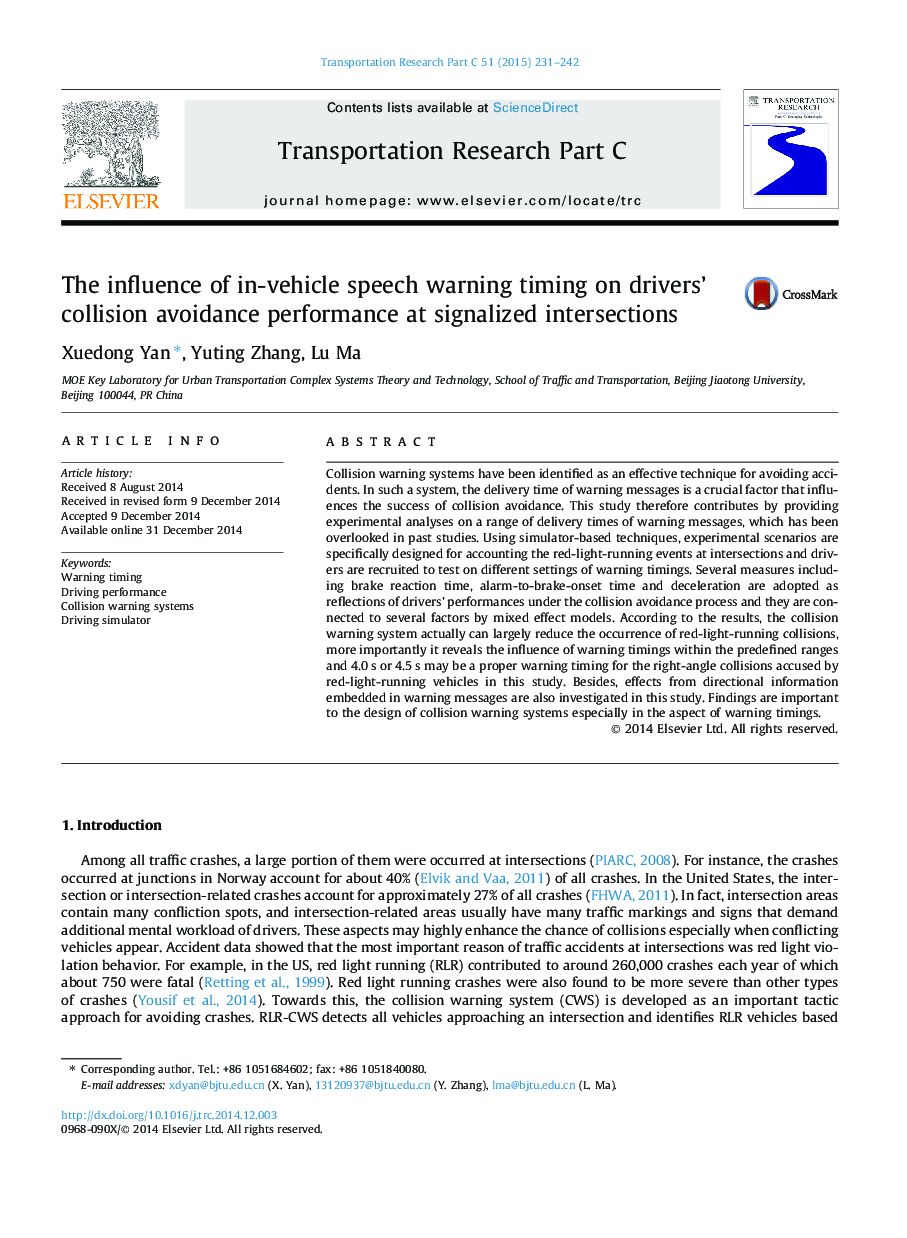| Article ID | Journal | Published Year | Pages | File Type |
|---|---|---|---|---|
| 525000 | Transportation Research Part C: Emerging Technologies | 2015 | 12 Pages |
•In-vehicle RLR collision warning timing was tested in a driving simulator.•The range of warning lead time is from 2.5 s to 5.5 s with 0.5 s increment.•Collision avoidance performances are highly affected by warning timings.•Earlier warning leads to shorter reaction time and lower deceleration rate.
Collision warning systems have been identified as an effective technique for avoiding accidents. In such a system, the delivery time of warning messages is a crucial factor that influences the success of collision avoidance. This study therefore contributes by providing experimental analyses on a range of delivery times of warning messages, which has been overlooked in past studies. Using simulator-based techniques, experimental scenarios are specifically designed for accounting the red-light-running events at intersections and drivers are recruited to test on different settings of warning timings. Several measures including brake reaction time, alarm-to-brake-onset time and deceleration are adopted as reflections of drivers’ performances under the collision avoidance process and they are connected to several factors by mixed effect models. According to the results, the collision warning system actually can largely reduce the occurrence of red-light-running collisions, more importantly it reveals the influence of warning timings within the predefined ranges and 4.0 s or 4.5 s may be a proper warning timing for the right-angle collisions accused by red-light-running vehicles in this study. Besides, effects from directional information embedded in warning messages are also investigated in this study. Findings are important to the design of collision warning systems especially in the aspect of warning timings.
